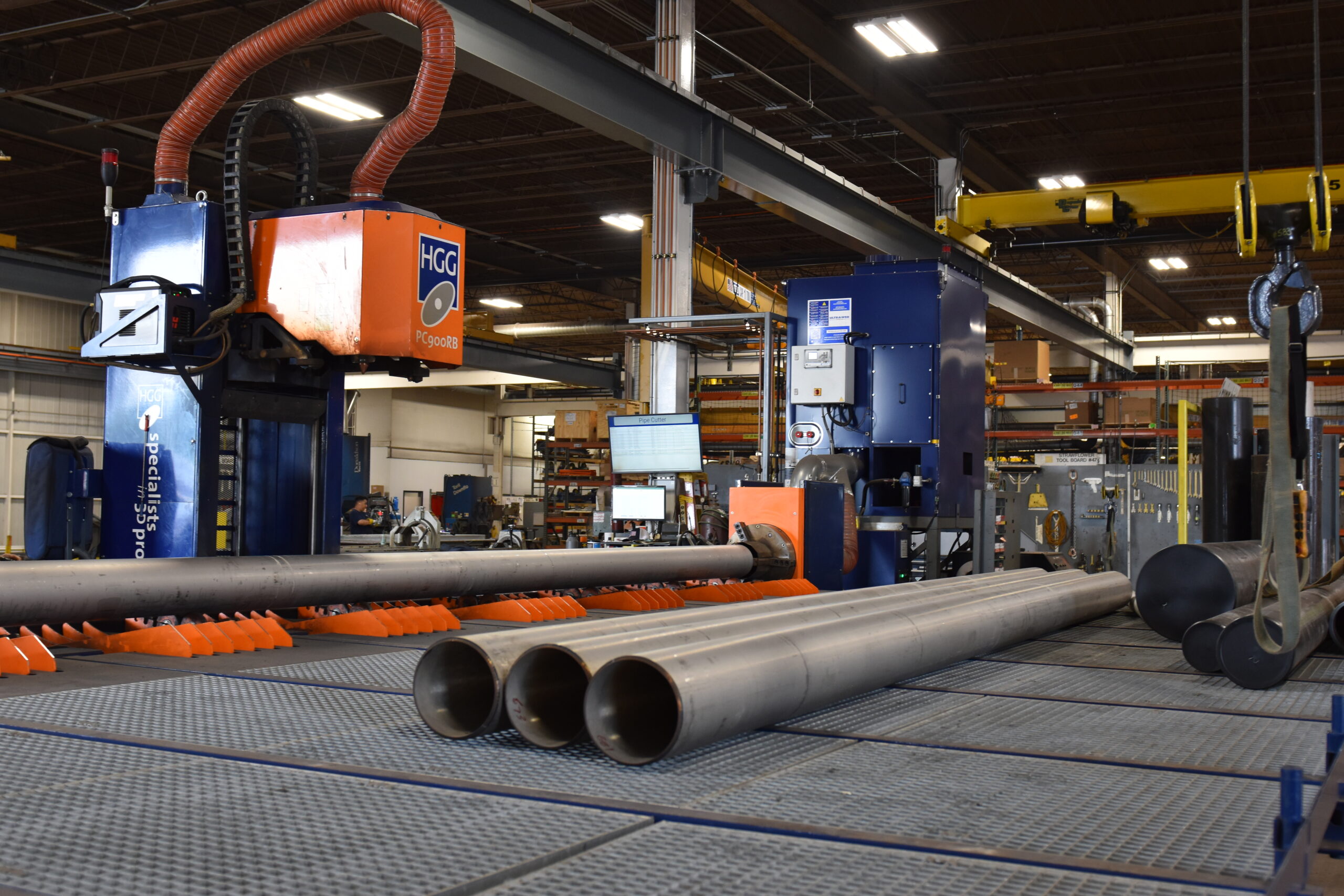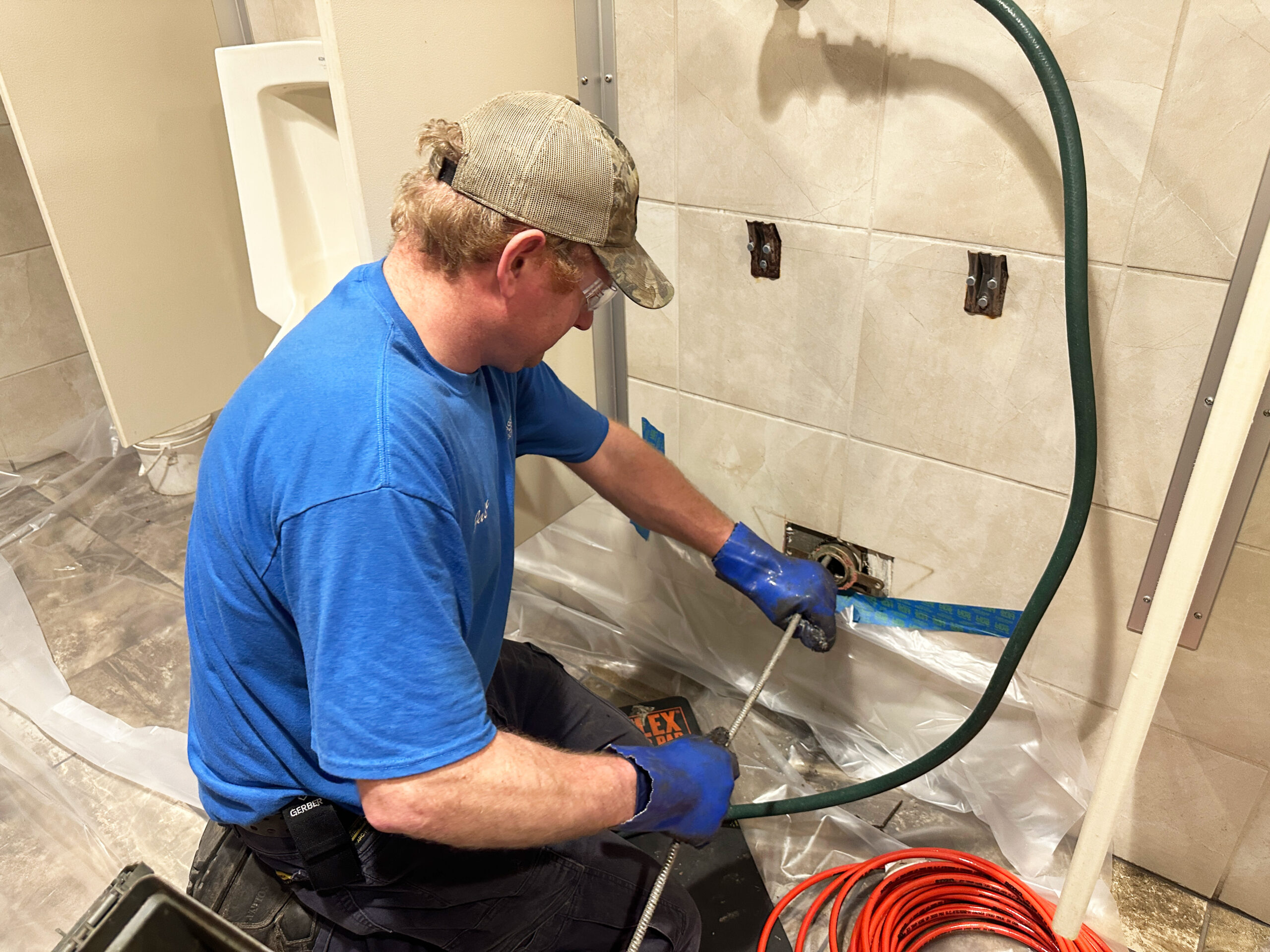Does your Mechanical Contractor have what it takes? There are three things to consider when choosing a Mechanical Contractor: safety, qualifications, and capabilities. To better serve you, we have created this series as a guide to help you identify the right Mechanical Contractors to fit your needs and get the job done right. Follow this series to make sure your Mechanical Contractor has what it takes.
Asking the right questions is important. Would you buy a car without first asking about the gas mileage and features? Would you buy a house without questioning when it was built and how recently any updates had been made? For businesses especially knowledge is powerful and seeking to understand your Mechanical Contractor’s capabilities before your project begins can help eliminate miscommunication, stress, and financial worry during the most pivotal part of your project.
Have you asked your Mechanical Contractor about their prefabrication capabilities? You may already know your contractor can complete the project; they may have already quoted it for you. But whether they plan to prefabricate significant portions of the job in their own facility or to fit all the pieces together on-site can have a significant effect on the final result of your project and its date of completion. We list below a few of the risks you are exposed to by not asking your Mechanical Contractor this simple question.
RISK NO. 1: WEATHER-RELATED ISSUES
Imagine the difficulties that snow, rain, and wind can cause as your components are spread out on a job site. By having parts staged around the area you run the risk of each integral part of your assembly being exposed to elements that cannot only be dirty but corrosive. Weather and site-related variables impact the quality of the welds and also the integrity of the constructed piece overall.
TIG welding can be required onsite when multiple pieces of equipment need to be fitted and have not been prefabricated before arriving on the job. If the weld is exposed to wind during the welding phase it can blow away the shielding gas and cause porosity in the weld. Although windshields and other forms of blocking may be put into place, lack of a clean, dry environment is still of great concern here and can have a significant impact on the integrity of your system overall.

RISK NO. 2: UNCONTROLLED ENVIRONMENT
On the job site, you not only have the elements to contend with but also any particles or debris that might be generated by other contractors, machinery, or operators on site. Components especially recommended for prefabrication include those that are of a hygienic nature or need to be clean. It is especially crucial for these pieces to stay free of the contaminants, grit, and dirt that they can be regularly exposed to while being staged at a job site. Contaminants collected inside of piping and valves on-site plug the system filters and impact system operation. When equipment is prefabricated in a clean Lean manufacturing space there are controls already in place to minimize this risk including dust collection, fume mitigation, and temperature controls.
RISK NO. 3: EFFICIENCY CONCERNS AND UNEXPECTED DELAYS
Mechanical Contractors who have the ability to prefab their equipment are set up for optimal efficiency, especially when compared to the challenges of fabricating in the field.
Materials and parts that are delivered loose to a job site require a much longer setup process from start to finish. Even prior to the fabricating itself, pieces need to be shipped to the job site, have packing materials removed, and be sorted and staged for assembly. At which point the production site needs to be set with the right welding tools, equipment, lighting, and electrical power supply before the fabricating process can even begin. This same process, when completed in a controlled assembly environment, can take a fraction of the time (as well as a proven way to decrease field installation expenses) because many of the aforementioned steps can be skipped entirely. Facilities with this offering are prepared with the space, tools, and cranes available to efficiently prefab the job with a streamlined approach.
Some systems require radiographic (x-ray) testing to ensure the integrity of the structure is sound. During this testing, facilities are required to isolate an area and ensure vacancy prior to performing this test. Mechanical Contractors who offer prefabrication services can perform this test in their facility before shipping the equipment to the job site. This means the work on your job site can continue during this phase as opposed to testing onsite and requiring all contractors and occupants to halt their work and vacate the premises until this testing is complete. A detail like this, if overlooked, can derail the entire project timeline.
 RISK NO. 4: WELD QUALITY
RISK NO. 4: WELD QUALITY
Your system deserves precise workmanship to ensure its’ integrity. Leaks in ammonia refrigeration systems, for example, are unacceptable. Beveling and prep work on piping assemblies in the field can be a manual, slow, and inaccurate process. Completing this process at the prefabricating facility is more precise and prevents rework onsite during installation. A Mechanical Contractor who can prefabricate your job can and should have a quality CNC pipe cutter and automated beveling capabilities in-house to be sure that welding begins on the best-prepared surfaces possible. Precise cuts and quality welds are a must-have. See our previous article on certified welders and AWS and ASME compliant procedures to learn more about why quality cuts and welds are crucial for the life of your investment.
RISK NO. 5: SAFETY
When welding takes place on the job site, the contractor is required to have a hot work permit in order to protect contractors, vendors, and visitors from any fire that may be caused by welding activities. The process that follows this permit often includes the addition of “fire watch personnel” who are required to observe the hot work and surrounding areas during the welding/cutting process and typically for an additional 30 minutes or longer after completion in order to ensure there are no stray embers or sparks that may result in a flare-up. By decreasing the amount of fabrication onsite you are also reducing the risk of any fire hazards and minimizing costs needed for “fire watch personnel” to monitor the area.
Asking this simple question can spare you countless performance, quality, and safety risks facing your system and facility. Ask your Mechanical Contractor if they can perform in-house prefabrication and what portions of your project they plan to construct in their facility – the answer might surprise you.





